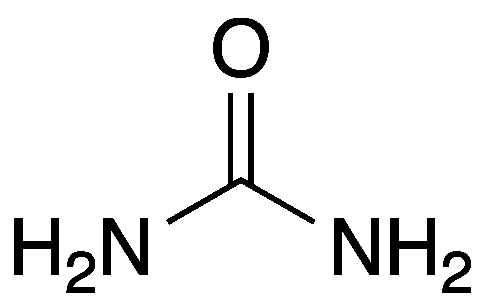Titanium is a chemical element with the atomic number 22 and the symbol Ti. Titanium metal is a very durable metal for engineering applications because it is corrosion-resistant, as well as extremely strong and light. It’s 40% lighter than steel but has the same strength as high-strength steel. The electron configuration of titanium is 1s2 2s2 2p6 3s2 3p6 4s2 3d2.

Table of Contents
Titanium Key Points
- High tensile strength even at high temperatures
- Light weight
- High corrosion resistance.
- ability to withstand extreme temperatures.
- Transition Metal
- The density is 4.54 g/cc.
- The melting point is 1933 K.
- Boiling Point is 3560 K.
- Atomic Radius is 147 pm
- The atomic volume is 10.6 cc/mol.
- The Covalent Radius is 132 pm.
Is Titanium Magnetic?
Titanium is a paramagnetic metal that attracts magnets only weakly. The primary cause of its paramagnetic property is the presence of four unpaired electrons in its electrical structure. Therefore, Titanium is non-magnetic in normal conditions. It has poor heat and electrical conductors.
Color of Titanium
Titanium is a naturally occurring element with a silvery-greyish-white color. It is the world’s hardest natural metal and is three times stronger than steel and far more powerful than gold, silver, and platinum while remaining extremely light. Check the full article “What color is a titanium”?
Summary
- The Titanium electronic configuration is 1s2 2s2 2p6 3s2 3p6 4s2 3d2.
- Titanium is a paramagnetic substance and is weakly attracted to magnets.
- Titanium’s properties like high tensile strength, strong resistance to corrosion, and tolerance to high temperatures make it a valuable metal.
Related Topics
Paramagnetic Materials
Flexural Strength- An Overview
Strain Energy Concept And Formula Derivation
Sodium Valence Electrons
How many electrons does oxygen have?
Frequently Asked Questions
1. Sulfur electronic configuration
Sulfur (sulphur in British English) is a chemical element with the symbol S and the atomic number 16.
The sulfur electron configuration is 1s2 2s2 2p6 3s2 3p4.
2. Iron electronic configuration?
Iron is the fourth most abundant element in the Earth’s crust in terms of mass. It has the atomic number 26 and the chemical symbol Fe (from the Latin word “Ferrum”).
The iron’s electron configuration is 1s22s22p63s23p64s23d6.
3. Calcium electronic configuration?
Calcium is a silvery-white, soft metal that tarnishes rapidly in the air and reacts with water. It is the fifth most abundant metal in the Earth’s crust (4.1%) and is not found uncombined in nature but occurs abundantly as limestone (calcium carbonate), gypsum (calcium sulfate), fluorite (calcium fluoride), and apatite (calcium chloro-or fluoro-phosphate).
calcium electron configuration is 1s2 2s2 2p6 3s2 3p6 4s2
4. How many electrons does helium have?
In a single helium atom, there are 2 protons, 2 electrons, and 2 neutrons. Helium is the second element in the periodic table. Because s subshells can hold up to two electrons, both electrons fit into the 1s subshell; thus, the electron configuration for helium atoms is 1s2.
Check the full article “How many electrons does Helium have?”.
5. What is malleability?
Malleability refers to a substance’s ability to distort under pressure. The material can be pounded or rolled into thin sheets if it is pliable. Metal malleability refers to the ability of a metal to deform under compression and take on a new shape.
6. Valence electrons in nitrogen?
Nitrogen (N) is a nonmetallic element that belongs to Periodic Group 15 [Va]. It is the most abundant element in the Earth’s atmosphere and is found in all living things. It is a colorless, odorless, and tasteless gas. Nitrogen has a total of 5 valence electrons. Nitrogen’s electrical configuration is 1s22s22p3.
7. Silicon valence electrons?
Silicon has an atomic number of 14, which means it has two electrons in the first shell, eight electrons in the second shell, and four electrons in the third shell. Silicon’s valence shell has four electrons.
8. Hydro turbines?
Hydro turbines are devices used in hydroelectric power plants to transmit energy from flowing water to a rotating shaft, where it is converted into electricity. In response to the infusion of water into their blades, these turbines revolve or spin.
9. The molar mass of methanol?
The molar mass of methanol is 32.04 g/mol. The methanol formula is CH3OH and it is also known as methyl alcohol, wood alcohol, or wood spirit.
More Links
Flaring of gases
Photonics
Electromagnet| A Simple Overview
Conduction in Physics| Easy Examples
Quarks in Physics
- BCl3 Lewis Structure in four simple steps - November 1, 2023
- PH3 Lewis Structure in four simple steps - October 8, 2023
- PF3 Lewis structure in four simple steps - September 24, 2023



